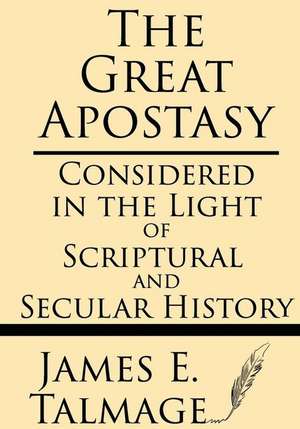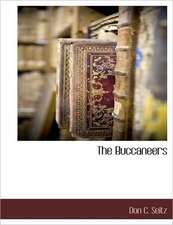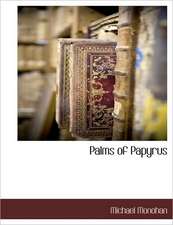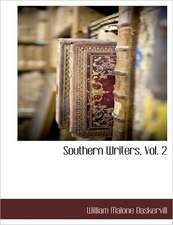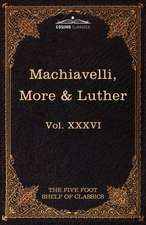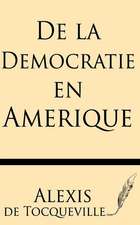The Great Apostasy
Autor James E. Talmageen Limba Engleză Paperback
By James E. Talmage
Excerpt from Contents
I. Introduction: The Establishment of the Church of Christ
II. The Apostasy Predicted
III. Early Stages of the Apostasy
IV. Causes of the Apostasy - External Causes Considered
V. Causes of the Apostasy - External Causes, Continued
VI. Causes of the Apostasy - Internal Causes
VII. Internal Causes - Continued
VIII. Internal Causes - Continued
IX. Internal Causes - Continued
X. Results of the Apostasy - Its Sequel
Chapter 1 Excerpt
1. A belief common to all sects and churches professing Christianity is that Jesus Christ, the Savior and Redeemer of the human race, established His Church upon the earth by personal ministration in the meridian of time. Ecclesiastical history, as distinguished from secular history, deals with the experiences of the Church from the time of its establishment. The conditions under which the Church was founded first claim our attention. 2. At the beginning of the Christian era, the Jews, in common with most other nations, were subjects of the Roman empire. - (See Note 1, end of chapter.) They were allowed a considerable degree of liberty in maintaining their religious observances and national customs generally, but their status was far from that of a free and independent people. 3. The period was one of comparative peace, - a time marked by fewer wars and less dissension than the empire had known for many years. These conditions were favorable for the mission of the Christ, and for the founding of His Church on earth. 4. The religious systems extant at the time of Christ's earthly ministry may be classified in a general way as Jewish and Pagan, with a minor system - the Samaritan - which was essentially a mixture of the other two. The children of Israel alone proclaimed the existence of the true and living God; they alone looked forward to the advent of the Messiah, whom mistakenly they awaited as a prospective conqueror coming to crush the enemies of their nation. All other nations, tongues, and peoples bowed to pagan deities, and their worship comprised naught but the sensual rites of heathen idolatry. Paganism -(See Note 2, end of chapter.) was a religion of form and ceremony, based on polytheism - a belief in the existence of a multitude of gods, which deities were subject to all the vices and passions of humanity, while distinguished by immunity from death. Morality and virtue were unknown as elements of heathen service; and the dominant idea in pagan worship was that of propitiating the gods, in the hope of averting their anger and purchasing their favor.
------------------------------------------------------------------------------------------------------------------------------------------
Windham Press is committed to bringing the lost cultural heritage of ages past into the 21st century through high-quality reproductions of original, classic printed works at affordable prices.
This book has been carefully crafted to utilize the original images of antique books rather than error-prone OCR text. This also preserves the work of the original typesetters of these classics, unknown craftsmen who laid out the text, often by hand, of each and every page you will read. Their subtle art involving judgment and interaction with the text is in many ways superior and more human than the mechanical methods utilized today, and gave each book a unique, hand-crafted feel in its text that connected the reader organically to the art of bindery and book-making.
We think these benefits are worth the occasional imperfection resulting from the age of these books at the time of scanning, and their vintage feel provides a connection to the past that goes beyond the mere words of the text.
| Toate formatele și edițiile | Preț | Express |
|---|---|---|
| Paperback (6) | 45.86 lei 3-5 săpt. | |
| CreateSpace Independent Publishing Platform – | 45.86 lei 3-5 săpt. | |
| CREATESPACE – | 46.06 lei 3-5 săpt. | |
| Windham Press – | 56.06 lei 3-5 săpt. | |
| Outlook Verlag – 27 ian 2018 | 185.51 lei 3-5 săpt. | |
| Blurb – 21 aug 2022 | 90.25 lei 6-8 săpt. | |
| LIGHTNING SOURCE INC – 27 mai 2018 | 112.72 lei 17-23 zile | |
| Hardback (2) | 144.99 lei 6-8 săpt. | |
| Outlook Verlag – 27 ian 2018 | 338.65 lei 3-5 săpt. | |
| Binker North – oct 1909 | 144.99 lei 6-8 săpt. |
Preț: 56.06 lei
Nou
Puncte Express: 84
Preț estimativ în valută:
10.73€ • 11.20$ • 8.86£
10.73€ • 11.20$ • 8.86£
Carte disponibilă
Livrare economică 25 martie-08 aprilie
Preluare comenzi: 021 569.72.76
Specificații
ISBN-13: 9781628451184
ISBN-10: 1628451181
Pagini: 102
Dimensiuni: 178 x 254 x 5 mm
Greutate: 0.19 kg
Editura: Windham Press
ISBN-10: 1628451181
Pagini: 102
Dimensiuni: 178 x 254 x 5 mm
Greutate: 0.19 kg
Editura: Windham Press
Notă biografică
James Edward Talmage (21 September 1862 - 27 July 1933) was an English chemist, geologist, and religious leader who served as a member of the Quorum of the Twelve Apostles of The Church of Jesus Christ of Latter-day Saints (LDS Church) from 1911 until his death. A professor at Brigham Young Academy (BYA) and University of Utah (U of U), Talmage also served as president of the U of U and Latter-day Saints' University. In addition to his academic career, Talmage authored several religious-themed books, the most prominent of which are Jesus the Christ and Articles of Faith. Despite first being published in 1915 and 1899, the books remain classics in Mormon literature. An academic and religious scholar, Talmage did not believe that science conflicted with his religious views. Regarding the conflicting Mormon views on evolution, Talmage attempted to be a mediator between church leaders B.H. Roberts and Joseph Fielding Smith who disagreed about evolution and the origin of man. In addition to his academic and religious involvement, Talmage was involved in local political leadership in Provo as a city council member, alderman, and justice of the peace Talmage was an attentive student and teacher of science, but he did not believe there was conflict between science and religion and did not worry about differences or discrepancies between the two fields of thought. He believed that with time and continued learning, these discrepancies would eventually be resolved.[5]:231-233 He had confidence in the scientific method and was able to accept scientific discoveries and findings supported by it while still holding fast to his religious beliefs. His views on science and religion are demonstrated by this statement: "Within the Gospel of Jesus Christ there is room for every truth thus far learned by man, or yet to be made known."[32] Talmage's views on science and religion can also be seen through an event that took place in 1929. In that year, B.H. Roberts, a scientific scholar and LDS Church leader, presented a 700-page manuscript to the First Presidency which attempted to completely align theology and science. Other church leaders were concerned with what was written in this manuscript and disagreed with the claims about evolution represented. Joseph Fielding Smith, then a member of the Quorum of the Twelve Apostles, made a statement against what was written about evolution in the manuscript prepared by Roberts. Talmage tried to mediate between Smith and Roberts, suggesting to the First Presidency that they come out with a statement of neutrality on the issue, which they did. They soon came out with a statement stating that neither side of the argument was accepted as church doctrine.
